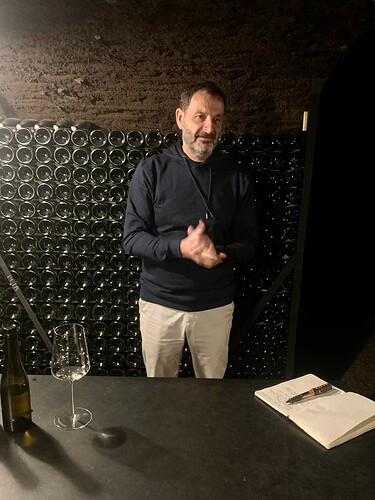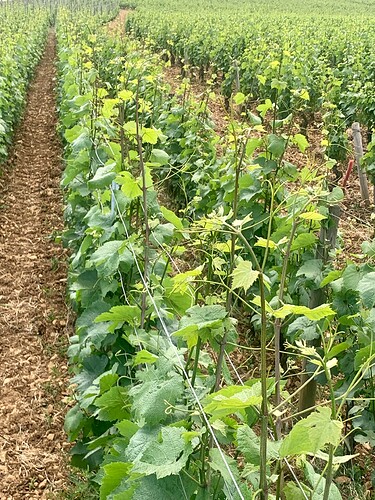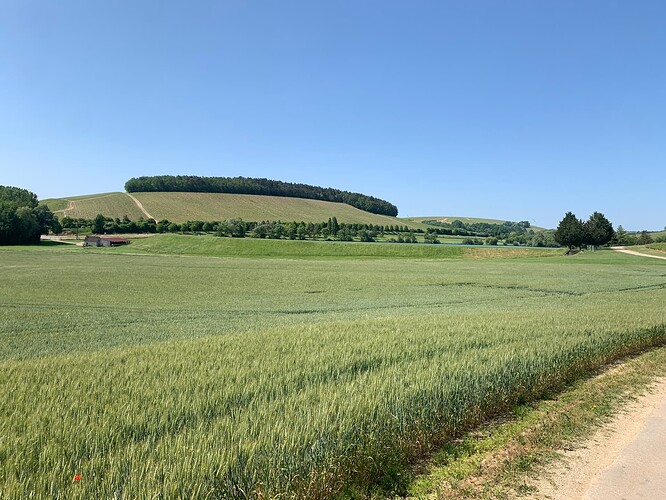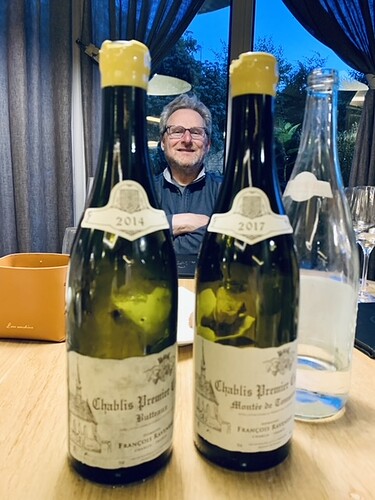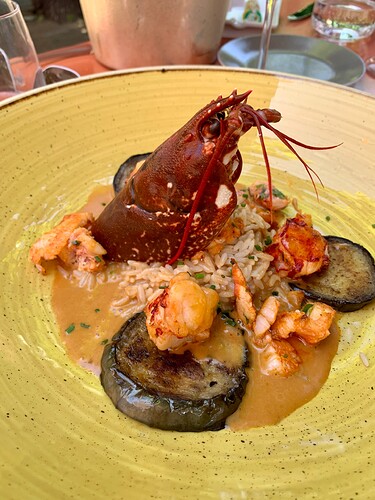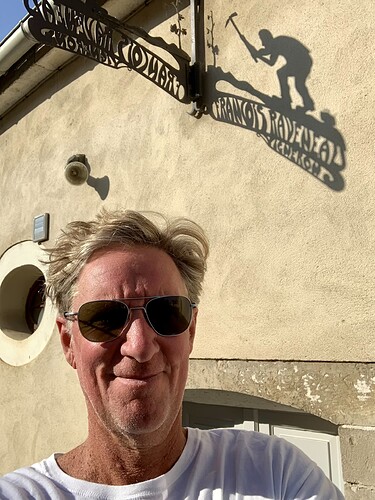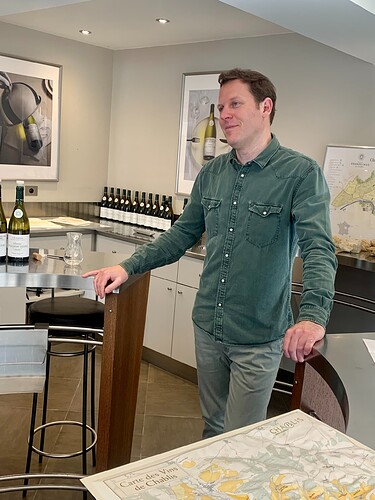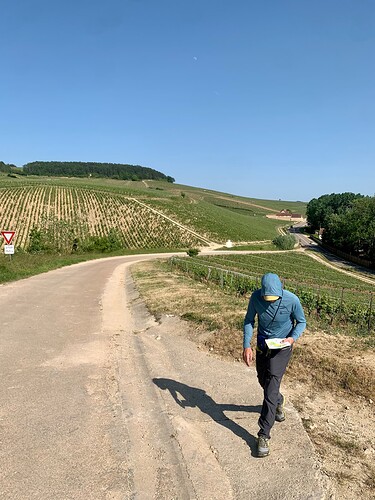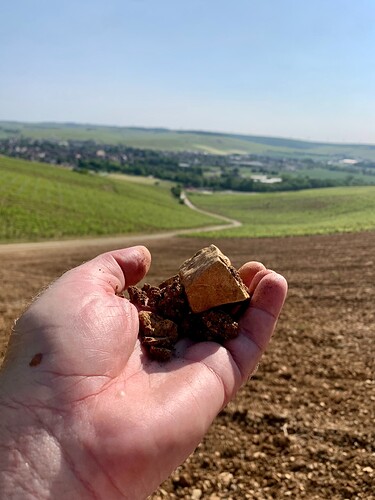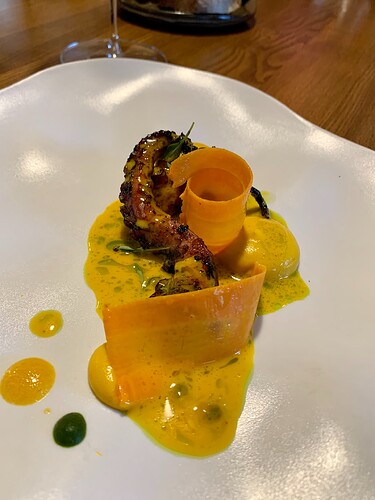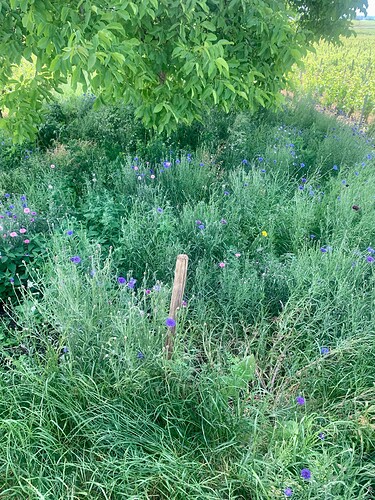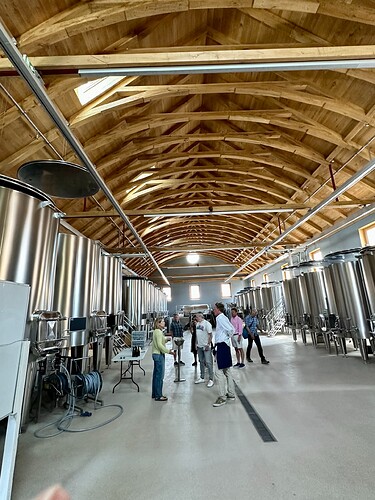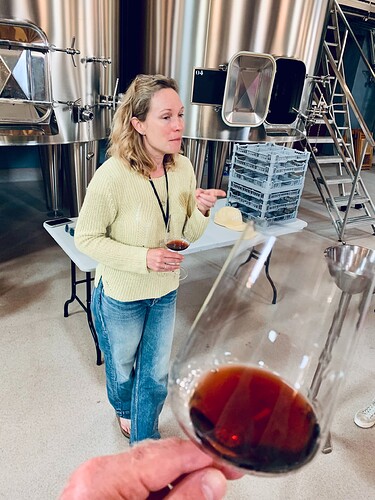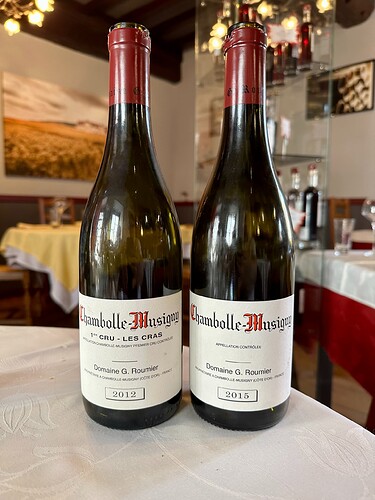I returned this week from a 10-day tasting trip to Chablis and Burgundy. A few years back I wrote about my first trip to the area, offering some travel/dining tips. I am now sharing some posts in installments about my recent visits to some of the top domaines in the region and observations about how to best enjoy one’s time in this special place.
It won’t be some comprehensive survey of vintages or the dining scene, but rather a few snapshots of moments and observations. I didn’t take copious notes about each wine tasted during the visits and I won’t presume to make some sweeping pronouncements about the 2021s and 22s I tasted in bottle and barrel.
What I most enjoy about these trips is visiting with vignerons that make my favored wines – getting to know them a bit, seeing what their homes and cellars look like, asking what the future holds for their domaines, their families, and the area in general.
I tend to anthropomorphize wines a bit, assigning human characteristics to the wines and finding some of the makers’ personal qualities reflected in the wines they make. It’s illogical but it works for me. Domaine Drouhin wines are as friendly and supremely elegant as the woman who makes them. Roulot wines are direct and steely like the man who makes them.
The cellars also tend to reflect the personalities of their vignerons and the wines made there. Walk inside Domaine Leflaive’s immaculate and hushed state-of-the-art winemaking facility in Puligny and you feel like you are walking into a Porsche workshop. You understand why the wines taste as precise and regal as they do. When you step inside the Mugneret Gibourg’s unassuming operations in Vosne – you feel like you are being welcomed into a humble family’s home and garden, which exhibit little care for what the neighbors say or what other people do. You begin to grasp why these supple but substantial wines could only come from this one sweet family and why they stand the test of time.
The other big draw for me is to walk the vineyards, examining the soil and leaf canopies and trying to understand how the different expositions and elevations affect the wine in the bottle. Until you visit the hidden saddle of Clos St. Jacques in Gevrey, it’s hard to grasp why this super 1er cru has such exalted status. Seeing the vast, flat expanse of grand cru Clos Vougeot, you come to understand a bit more why so many of the wines made there fail to excite. Surveying Lamy’s high density plantings in undulating Criots Batard Montrachet first-hand, you get a sense that he’s trying to do something a bit radical in one of the most hallowed vineyards in all of Burgundy.
My strategy this visit largely mirrored that of my previous trip: to eat and drink as much as I wanted, whenever I wanted, wherever I wanted. We booked 2-3 visits a day and made reservations for lunch and dinner well in advance. (Prebooking is a must in Burgundy. We saw many hapless wine tourists being met with a stern frown and a “Complet” when they inquired about getting a table.) Mornings would start with pain au chocolats, lunches included both cheese and dessert, and dinners might end with digestif spirits like marc – all practices I would never indulge in back home.
My traveling companions were three friends/wine collectors from L.A. who I frequently do blind tastings with back home. Our palates, ages, favorite producers and lifestyles are fairly aligned, which makes travel easier. There’s always a bit of ego and arm wrestling that goes on when setting up tastings, choosing restaurants, finding accommodations and, especially, when selecting wines off well-stocked restaurant lists. But we jamokes got on fairly well. Our nickname became The Malconsorts, riffing off what Diana Snowden Seysses told us what the fabled super 1er cru vineyard refers to … a loose translation that roughly means vaguely roguish companions who like to have a good time, often to excess.
Our trip started in Chablis, a region I have never been before. I spent two days there and its reputation as a somewhat sleepy, one-stoplight village largely held true. The streets are well kept and super quiet. You rarely see people out of doors. It’s bucolic and peaceful. You can’t help but feel relaxed. Just gazing at the gorgeous vine-covered slopes that ring the town, your blood pressure probably drops 20 basis points.
The main appeal is being able to walk the vineyards and better understand the various climats and Grand Cru plots in the AOC. But even better is being able to source aged 1er cru Raveneau for $100 euro at several bistros around town. These types of trips can be expensive – so being able to buy some of the world’s best wines at half or a third of quarter of U.S. retail proves to be effective rationalization. A few bottles of Ramonet at lunch can “subsidize” the cost of your plane tickets or hotel stays. Illogical again, I know, but oddly comforting.
We drove into Chablis from Orly (about a 90-minute drive) on the Sunday night of a holiday weekend – Whit Monday. The sleepy town had become downright soporific, with many stores, restaurants and wineries shuttered for business. But we managed to squeeze in a few excursions.
Two of us started our Monday morning with an e-bike tour of the town, vineyards and surrounding countryside. The bikes have a programmed GPS app that self-guides you as you peddle through the gently rising and descending hills. A series of beeps alerts you if you veer off course, which is easy to do on the twisty backroads of Chablis.
I highly recommend the roughly 2-hour and 18-mile tour, as it’s a great way to work off some calories and the wine excess. Besides seeing some of the fabled Grand Cru vineyards up close, you’ll stop and check out some mesmerizing wind turbines at an energy farm up in the hills as well as a 14th century chapel tucked away in some of the village vineyards.
A lovely couple run the operation, which can be found at https://e-bikewinetours.com/. After running a restaurant in Belgium for 23 years, the wine lovers moved to Chablis and opened the friendly and efficiently run business. When I thanked the owner Dominique for being open on the holiday he said something with a wink that made me laugh: “The French don’t like to work. I am Belgian. I like to work.”
After our ride, we met our friend for lunch on the sunny patio at Hostellerie des Clos restaurant in the heart of town. We rewarded ourselves with – what else – a few bottles of Raveneau and a delicious lobster-and-rice dish redolent of saffron and white wine.
Next: A visit to Domaine Fevre and a walking tour of Chablis’ most fabled Grand Cru plots.
Editor’s note: You will see updates and further reports if you scroll down in the reply section over the next few days.
